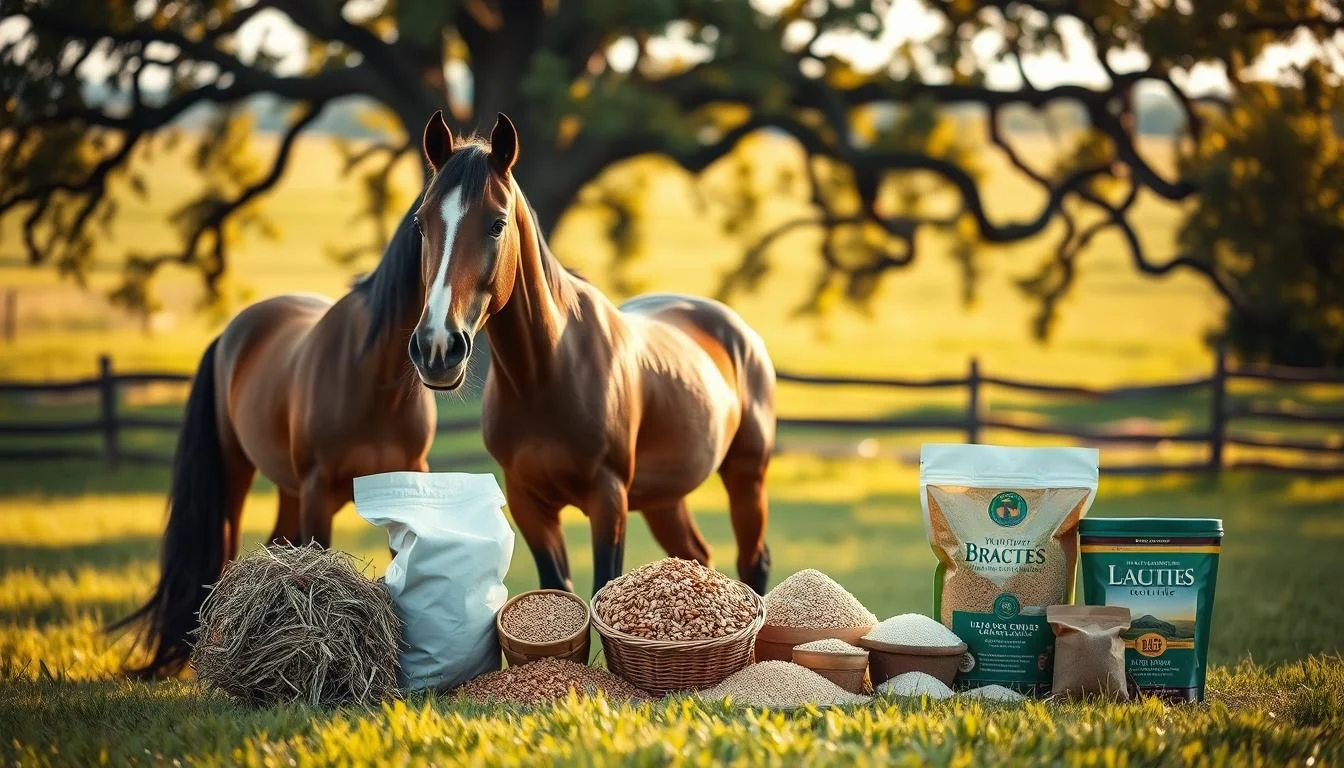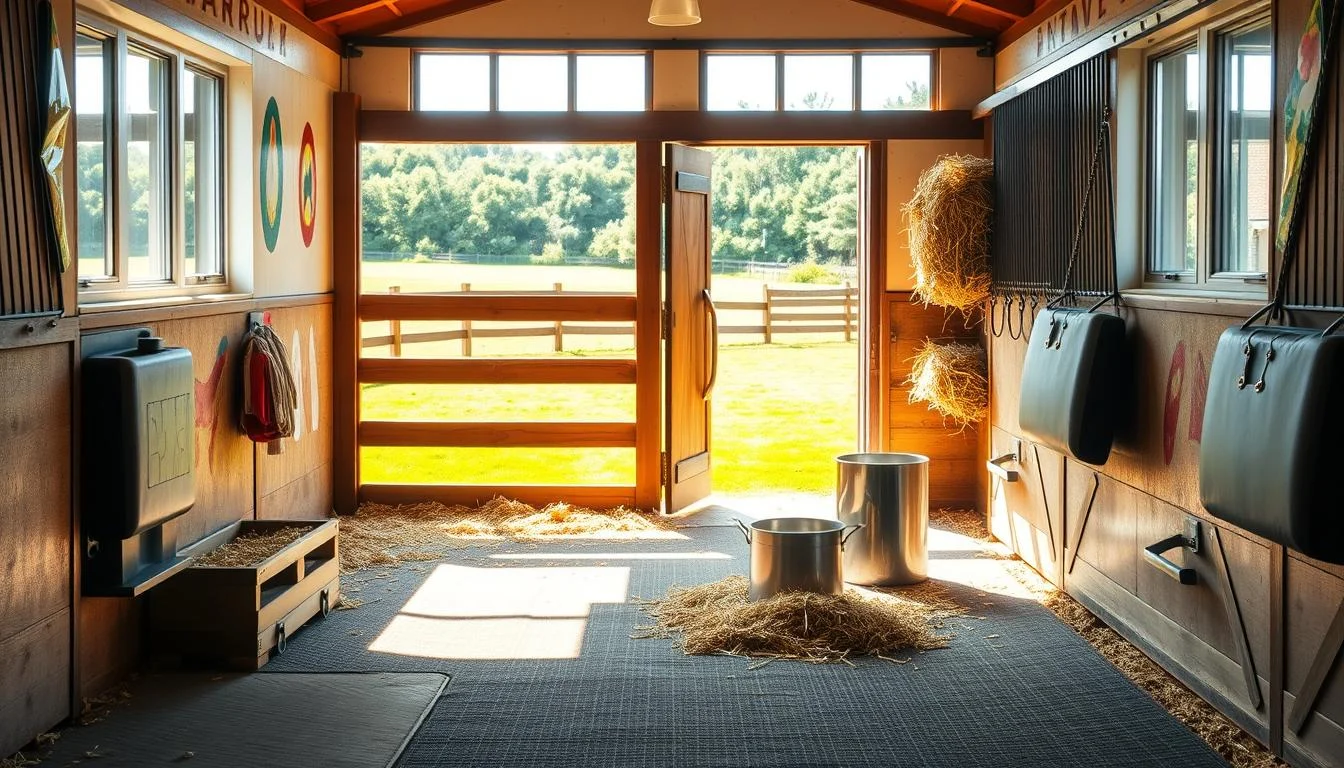Did you know that over 70% of equine owners report unexpected challenges when relocating their animals? Moving to a new facility stirs both excitement and stress—for you and your four-legged partner. Whether it’s adjusting to unfamiliar stalls or adapting to revised feeding schedules, every detail matters.
This guide is designed to simplify the process. We’ll walk through practical steps to ensure safety, comfort, and consistency during the move. From evaluating barn layouts to maintaining nutritional balance, preparation is your greatest ally.
Relocating isn’t just about logistics. Your animal’s emotional well-being matters too. Gradual adjustments, like introducing new hay blends slowly, help reduce anxiety. Real-life stories from Canadian owners highlight how thoughtful planning leads to smoother transitions and thriving companions.
You’ll find actionable advice here, whether you’re a first-time owner or a seasoned pro. Let’s turn this change into a positive adventure for everyone involved!
Key Takeaways
- Evaluate facilities thoroughly for safety and compatibility with your animal’s needs.
- Gradually adjust feed to prevent digestive issues during the move.
- Prioritize routines to maintain emotional stability in new environments.
- Connect with local Canadian equine communities for region-specific insights.
- Document health records and preferences to share with the new facility’s staff.
Understanding the Transition Process
Imagine relocating to a new home without warning—confusing, right? Your equine companion feels the same during sudden moves. A thoughtful approach helps avoid physical discomfort and emotional strain, ensuring they adapt confidently to fresh routines and spaces.
Why a Smooth Transition Matters
Abrupt shifts in diet or daily patterns can trigger colic or weight loss. Studies show that digestive systems need 7–10 days to adjust to new feeds. Similarly, unfamiliar sights and sounds may heighten anxiety, leading to pacing or reduced appetite. Gradual introductions let animals build trust in their surroundings.
Overview of the Changes Involved
Start by auditing the current facility’s routines—feeding times, turnout schedules, and social interactions. Compare these to the new location’s practices. For example, if hay types differ, blend them over a week to prevent gut issues. Introduce stalls or pastures in short sessions, increasing exposure daily.
Track behavioral cues like relaxed ears or calm breathing to gauge comfort levels. One Alberta-based owner shared, “Spending extra time grooming helped my mare recognize the new barn as safe.” Small, consistent steps create stability amid change, turning uncertainty into manageable progress.
Assessing and Choosing the Right Facility
How do you know if a barn is the right fit for your equine partner? Start by prioritizing safety and compatibility. Look beyond glossy brochures—dig into practical details that impact daily care and long-term health.
Evaluating Safety, Security, and Infrastructure
Inspect fencing for durability—wood or vinyl rails beat rusty wire. Check stall latches and flooring for smooth surfaces. Proper ventilation reduces respiratory risks. One Manitoba owner learned this after moving: “Barns with cross-breezes kept my gelding healthier.”
| Feature | Ideal Standard | Red Flags |
|---|---|---|
| Fencing | 4.5 ft high, no sharp edges | Sagging wires, loose posts |
| Stall Size | 12×12 ft minimum | Cracked walls, poor drainage |
| Feed Storage | Rodent-proof bins, dry area | Moldy hay, open containers |
Reviewing Pasture Quality and Feeding Facilities
Walk the grazing areas. Diverse grasses signal nutrient-rich land. Ask about hay sources—local growers often provide fresher options. Test automatic waterers to ensure consistent flow. A Quebec trainer notes, “Balanced turnout schedules prevent overgrazing and mud.”
Community Feedback and Staff Expertise
Chat with current boarders during visits. Do night checks happen? How quickly do staff respond to emergencies? Look for certifications in equine first aid. “Our barn’s WhatsApp group shares real-time updates,” says an Alberta rider. Trust grows where transparency thrives.
horse boarding transition tips: Preparing Your Horse for Change
Change can unsettle even the most adaptable animals. Thoughtful preparation reduces confusion and builds confidence, creating a foundation for success in unfamiliar settings. Let’s explore practical ways to ease this journey while keeping your companion’s well-being front and center.
Introducing New Surroundings Gradually
Start with short visits to the facility before moving day. A 30-minute tour allows your four-legged friend to sniff stalls, walk pastures, and meet neighbors. Consistent exposure helps replace uncertainty with familiarity. One Ontario owner shared, “Three weekly visits transformed my gelding’s anxiety into curiosity—he now trots eagerly into his stall!”
Observe reactions closely during these sessions. Relaxed ears, soft nickering, or interest in grazing signal comfort. Tense muscles or pinned-back ears? Extend the adjustment period. Small steps prevent overwhelm.
Adapting to New Daily Routines
Mirror the upcoming schedule at your current barn first. If turnout times differ by two hours, shift activities gradually over a week. Feed adjustments should follow a similar pace—mix 25% new hay with familiar forage initially, increasing every three days.
Track behavior patterns like:
- Appetite consistency
- Social interactions with herdmates
- Energy levels during workouts
A British Columbia rider noted, “Keeping a journal revealed my mare’s restlessness peaked at dusk. We adjusted her evening feed, and she settled right in.” Flexibility paired with observation turns challenges into triumphs.
Managing Feed and Nutrition Transition
What’s the first thing your companion notices in a new home? The food! Sudden dietary shifts can disrupt digestion and mood. A strategic approach to hay, water, and supplements keeps their body thriving while reducing stress during relocation.

Mix Old and New Gradually
Start by blending 25% new hay or grain with familiar options. Increase the ratio every 2–3 days until fully switched. This slow process gives gut microbes time to adapt. Rushed changes risk colic or weight loss, especially with alfalfa-to-grass hay swaps common in Canadian facilities.
| Day | Old Feed | New Feed |
|---|---|---|
| 1–3 | 75% | 25% |
| 4–6 | 50% | 50% |
| 7–9 | 25% | 75% |
| 10+ | 0% | 100% |
Watch for Digestive Clues
Check manure daily—firm, moist balls signal good health. Watery stools or reduced appetite? Slow the transition. A Saskatchewan owner shared, “Tracking my mare’s poop saved us from a vet visit—she just needed extra time.”
Keep Water Access Flowing
Clean troughs encourage hydration. Test automatic waterers beforehand—some animals avoid unfamiliar sounds. Add electrolytes if intake drops temporarily. “Warm water with apple cider vinegar worked wonders during our Ontario move,” notes one rider.
Consult an equine nutritionist if weight fluctuates or energy dips. Small adjustments protect long-term health, turning mealtime into a comfort zone rather than a challenge.
Adjusting Exercise, Turnout, and Social Routines
Ever notice how a predictable rhythm keeps life steady? Animals thrive on consistency, especially during moves. Thoughtful adjustments to movement and social time help maintain physical stamina while easing mental stress in fresh environments.
Establishing a New Turnout Schedule
Start by blending old and new pasture times. If your companion previously roamed mornings but the facility offers afternoon turnout, shift their schedule by 30-minute increments daily. This gradual change prevents digestive upsets linked to abrupt routine shifts.
| Day | Pasture Time | Activity Level |
|---|---|---|
| 1–3 | 1 hour | Light grazing |
| 4–6 | 2 hours | Moderate play |
| 7+ | 4 hours | Full interaction |
Watch for relaxed body language during turnout. A Manitoba owner shared, “My gelding’s first week involved short sessions with calm herdmates. Now he canters out eagerly!”
Incorporating Regular Exercise and Play
Begin with groundwork before riding. Longe line sessions or obstacle courses build trust in new arenas. Keep initial workouts at 60% intensity to avoid muscle strain.
Socialization matters too. Introduce one pasture buddy at a time during supervised visits. Look for:
- Mutual grooming
- Shared hay consumption
- Calm herd positioning
Adjust training based on energy cues. A British Columbia rider notes, “Swapping intense drills for trail walks reduced my mare’s stress level.” Balance builds health without overwhelm.
Setting Up a Comfortable Stall and Environment
Creating a welcoming stall isn’t just about square footage—it’s about crafting a sanctuary. A thoughtfully arranged space reduces stress and supports physical health, helping your companion settle into their new barn with confidence. Let’s break down how to balance practicality with personal touches.

Assessing Stall Size, Ventilation, and Bedding
Aim for stalls at least 12×12 feet to allow safe movement. Check for drafts while ensuring steady airflow—cobwebs in corners signal poor ventilation. Opt for dust-free bedding like shavings or straw, avoiding slippery rubber mats alone. One Alberta owner noted, “Switching to flax bedding cut my gelding’s coughs by half.”
| Bedding Type | Pros | Cons |
|---|---|---|
| Pine Shavings | Absorbent, easy to clean | Can be dusty |
| Straw | Soft, natural insulation | Molds quickly if damp |
| Flax | Low dust, compostable | Higher cost |
Personalizing the Horse’s Space with Familiar Items
Hang a favorite salt lick or place their go-to toy in a corner. Scent matters too—rub a used saddle pad on walls to spread home smells. “My mare’s anxiety dropped when I brought her chewed-on lead rope,” shared a Quebec rider. These cues signal safety in unfamiliar settings.
Daily care routines matter. Scoop manure promptly and refresh water buckets twice daily. A tidy environment prevents infections and keeps your partner content. Remember: consistency in management turns any stall into a cherished home.
Navigating Emotional and Behavioral Adjustments
Relocation reshapes routines, relationships, and environments—factors that deeply influence equine emotional health. Recognizing subtle shifts in demeanor helps owners address challenges before they escalate. Let’s explore strategies to foster confidence and connection during this sensitive phase.
Recognizing and Managing Stress Signals
Watch for physical and behavioral clues like excessive sweating, repetitive pawing, or withdrawn posture. Early detection prevents minor stress from becoming chronic anxiety. Consistent monitoring during the first two weeks reveals patterns needing attention.
| Stress Signal | Management Step | Timeline |
|---|---|---|
| Refusing meals | Offer familiar treats mixed with new feed | Days 1–3 |
| Frequent vocalizations | Increase pasture time with calm herdmates | Days 4–7 |
| Stall circling | Introduce interactive toys or slow feeders | Days 8–14 |
Implementing Groundwork and Routine Adjustments
Reinforce basic commands like “stand” or “back” to rebuild trust in changing settings. A Saskatchewan trainer notes, “Ten minutes of focused groundwork daily stabilized my client’s anxious mare within five days.” Pair these sessions with predictable feeding and turnout schedules.
Tips for Supporting Both Partners Through Change
Share your companion’s preferences with barn managers—details matter. One Ontario owner found relief through weekly check-ins: “Updating turnout buddies based on my gelding’s behavior cut his stress by half.” Prioritize self-care too; calm owners project reassurance.
Progress unfolds uniquely for every pair. Celebrate small wins—a relaxed ear flick or curious sniff at new hay. With thoughtful management, the “horse new” phase becomes a bridge to stronger bonds and brighter adventures.
Conclusion
Every successful relocation begins with a blueprint tailored to your companion’s unique needs. Start by evaluating barn layouts, feed schedules, and social dynamics at the new facility. Gradual adjustments—like blending hay types or phasing in turnout times—protect digestive health while easing anxiety.
Collaboration is key. Regular check-ins with your veterinarian and trusted trainer ensure physical and emotional well-being during the move. Documenting preferences, from stall bedding to pasture buddies, helps staff provide consistent care.
Progress might unfold over weeks, not days. Celebrate small victories: relaxed grazing sessions, calm interactions with herdmates, or steady hydration. One Ontario owner shared, “Patience transformed our rocky start into a thriving partnership.”
You’ve got this! With thoughtful planning and open communication, your equine friend will soon embrace their fresh environment. Here’s to new adventures in a space where safety, comfort, and joy come first.
FAQ
How long does it take for a horse to adjust to a new barn?
Most equines adapt within 2–4 weeks, but timelines vary. Gradual exposure to the space, herd, and routines helps build confidence. Monitor behavior and consult your trainer if challenges persist.
What should I look for when touring a potential boarding facility?
Prioritize secure fencing, clean water access, and well-maintained stalls. Ask about daily turnout schedules, hay quality, and staff training. Online reviews or referrals from trusted riders can also highlight red flags.
How can I help my animal adapt to a different feeding schedule?
Mix small amounts of the new feed with their current diet over 7–10 days. Track manure consistency and energy levels. Sudden switches may disrupt digestion, so collaborate with the barn manager for consistency.
Are there signs of stress I should watch for during the move?
Weight loss, excessive sweating, or reluctance to eat/drink are common signals. Changes in social behavior—like aggression or withdrawal—also indicate anxiety. Address concerns early with groundwork or calming supplements like Purina’s Calming Support.
Should I bring familiar items to the new stall?
Yes! Favorite toys, a worn saddle pad, or even their usual bedding brand (like Standlee or Tractor Supply’s Pelleted Bedding) can ease anxiety. Familiar scents and textures create a sense of safety in unfamiliar spaces.
How do I transition from pasture turnout to stall boarding?
Start with short stall periods and increase gradually. Ensure daily exercise—like lunging or hand-walking—to mimic pasture movement. Use slow-feed hay nets to replicate grazing and prevent boredom.
What steps ensure proper hydration in a new environment?
Test water flavor by adding a splash from their previous source. Clean buckets daily, and consider electrolytes if intake drops. Brands like Finish Line’s Apple Elite often encourage drinking during changes.

